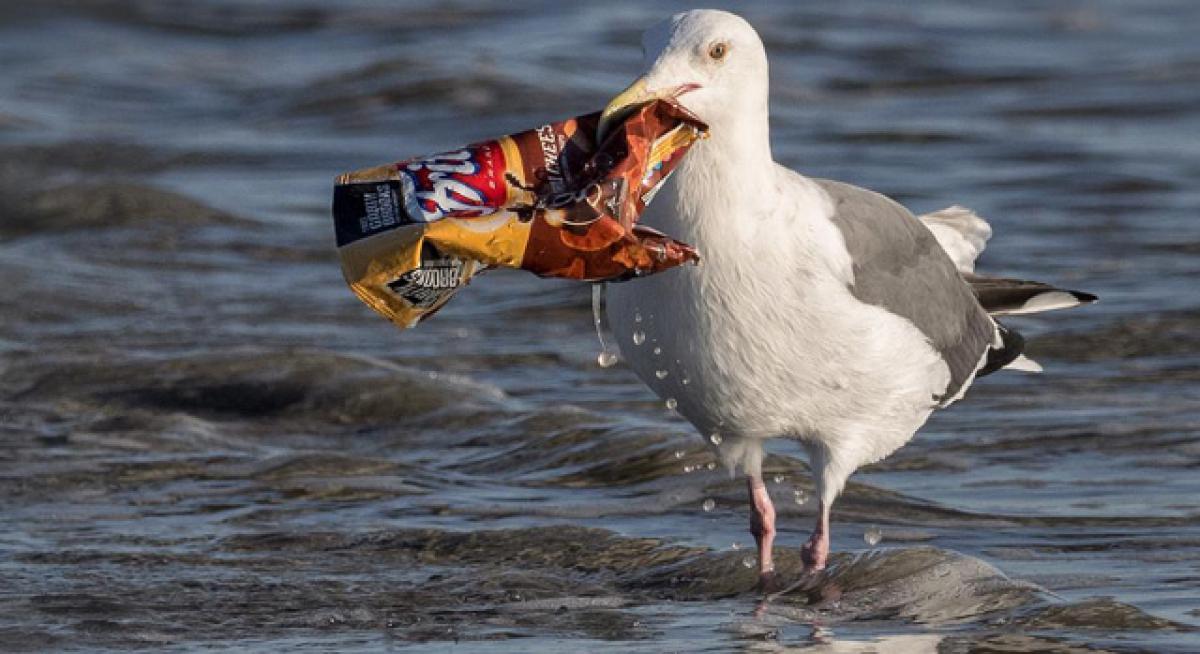Live
- BJP urges EC to stop Cong’s ‘Guarantee Cards’ campaign aimed to 'induce voters'
- Congress cheated Madigas: Dr. RS Praveen Kumar
- CBDT signs record 125 pacts to ease tax payments by big multinational firms
- Kamal Nath accuses BJP of ‘threatening’ Congress leaders in Chhindwara
- Odisha: BJP, BJD allege violation of MCC
- PM Modi lands in Guwahati to kickstart poll campaign
- ‘100 day action plan’ is PM Modi’s signature style for setting goals and meeting targets
- BJP will change the Constitution if they come to power again, says Priyanka Gandhi
- BJP-led NDA to cross 390-mark in Lok Sabha polls, predicts India TV-CNX survey
- Haier launches new TV series in four sizes in India
Just In

The seas near Mumbai, Kerala and the Andaman and Nicobar Islands are among the worst polluted in the world, according to a new study that mapped marine pollution around the world. Seabirds and fish are severely affected by the marine litter, as shown in the latest analysis by researchers from the Alfred Wegener Institute (AWI), Helmholtz Centre for Polar and Marine Research in Germany.
The seas near Mumbai, Kerala and the Andaman and Nicobar Islands are among the worst polluted in the world, according to a new study that mapped marine pollution around the world. Seabirds and fish are severely affected by the marine litter, as shown in the latest analysis by researchers from the Alfred Wegener Institute (AWI), Helmholtz Centre for Polar and Marine Research in Germany.
- The highest quantity of microplastics was seen in Juhu beach
- About 60-90 per cent of marine litter is made up of plastic polymers, plastic bags and food and beverage containers
- Recreational and religious activities are major contributing factors for abundance of plastics in beaches
- US$13 billion a year is the cost of environmental damage
For the first time, the researchers have compiled 1,237 scientific studies on marine litter into a single, comprehensive database called Litterbase. In 2016, Down To Earth reported how plastic production has surged over the past 50 years, from 15 million tonnes in 1964 to 311 million tonnes in 2014. Our neighbour, Sri Lanka, has also been struggling to prevent beaches from becoming a dumpyard.
Going by the analysis of plastic debris on beaches in Mumbai, on an average, 68.83 items are littered per square metre at four beaches Juhu, Versova, Dadar and Aksa. About 41.85 per cent of the litter comprises microplastics ranging in size from 1m to 5m. The highest quantity of microplastics was seen in Juhu beach (55.33 per cent) followed by Versova, Dadar and Aksa. Recreational and religious activities are major contributing factors for the abundance of plastics in these beaches.
In Kerala, microplastics were recovered from all sediment samples from Vembanad Lake the longest in India. It is indicative of their extensive distribution in the lake. The abundance of microplastics recorded from the sediment samples is alarming. The researchers also found microplastics in the gut of anchovies caught from the mud bank area of Alappuzha. As clams and fishes are the major source of protein to the local population, presence of microplastics poses a severe threat of contaminating the food web of this lake.
Even in Daman & Diu, plastic debris was found in the stomach of a Longman’s Beaked Whale. The analysis of sediment samples from a remote coral island in the Indian Ocean suggests presence of macro-, meso- and microplastics. In fact, the remote lakes in the Tibetan plateau are also not free from pollution as microplastics were detected in six out of seven sampling sites.
According to lead author of the paper, HB Jayashri from the National Aquatic Resources Research and Development Agency in Sri Lanka, “Most of the plastic pollution in the sea has its source on land. We also found that poorly treated domestic waste ended up polluting the ocean even more.”
“In the AWI Litterbase, we have for the first time analysed all groups of organisms affected by the litter, and have presented it in map form,” said Melanie Bergmann of the AWI. “The number of affected marine species is currently at 1,220, and is rising steadily.”
The interactive map documented littered locations in Australia, China, India, Indonesia, Japan, Malaysia, South Africa, the United States, parts of Europe, western coast of South America and also some isolated areas across the world.
Findings of the study are as follows:
• 8 million metric tonnes of plastic leaks into oceans worldwide each year
• 322 million tonnes of plastic—as much as 900 Empire State Buildings—was produced globally in 2015
• Between five and 13 million tonnes of plastic debris entered the marine environment in 2010.
• US$13 billion a year is the cost of environmental damage as plastic wreaks havoc on fisheries, marine ecosystems and economies
• 34 per cent of the species monitored during the study ingest litter and 30 per cent get entangled or trapped in it (as of 23 March 2017)
• About 60-90 per cent of marine litter is made up of plastic polymers, plastic bags, fishing gear and food and beverage containers.
• The total number of affected species is 1,220, and it is rising steadily. (http://www.downtoearth.org.in/news/mumbai-kerala-most-affected-by-marine-litter-microplastics-are-a-major-threat-57507)

© 2024 Hyderabad Media House Limited/The Hans India. All rights reserved. Powered by hocalwire.com







